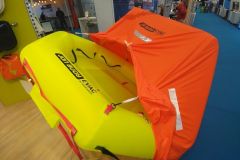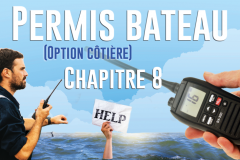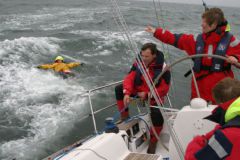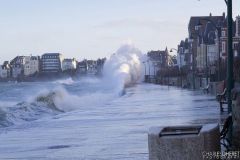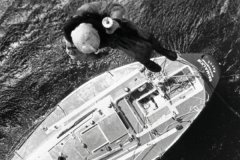Users of the sea, we are likely to come across objects at sea. Most of the time, it will be waste (plastic fish boxes, remains of nets...) which pollute, but represent little danger to navigation. In other cases, however, it can be logs, a boat dinghy, a kite sail or worse, a container.
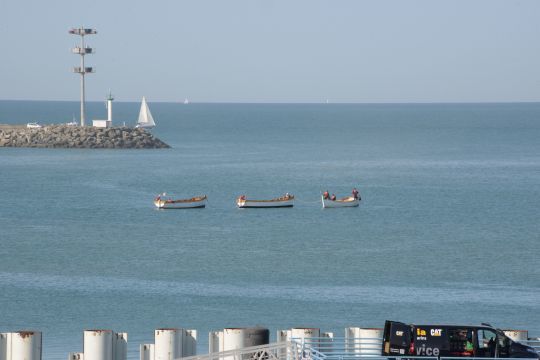
A single alert point for French boaters
In all cases, the minimum action we must take is to alert the authorities. For us, French yachtsmen, wherever we are in the world, it is the CROSS Gris Nez that will be our contact. Indeed, it is the MRCC (Rescue and Coordination Center) entry point in France. It will thus have the capacity and competence to issue a notice to the boats in the area where you are located (via an Enhanced Group Call) of the immediate danger. Following which, the operator will issue an urgent notice (AVURNAV) on the zone concerned (NAVAREA).
Collect as much information as possible to identify the real danger
When you see the object in question, take down as much information as possible that will not only identify it, but more importantly, locate it:
- your position at the time of the meeting
- the position of the object (surface, in-between waters, bottom ...)
- the color of the object
- the (a priori) nature of the object
- possible spills in the vicinity
- the strength of the wind and current at the time of the encounter
Then, as with any non-vital incident, a Security Alert should be issued via the appropriate means:
- VHF near the coast on channel 16
- HF, beyond on the frequency 2182.5 Khz
- Telephone gsm/iridium at all distances at 196 or +33 3 21 87 21 87
The sample message should be in the form :
" Security Security Security
Here <Nom du bateau> <Nom du bateau> <Nom du bateau>
i'm reporting a <Nature of object> adrift
Last seen at position <Votre Position>
It is a colored object <couleur>, located <surface / bottom / between two waters></couleur>
Here <Nom du Bateau>, the security message is over</Nom> "
Following this message, transmitted on VHF or HF, the authorities should, as for a Mayday message, invite you to switch to a working channel to collect more information.
In all cases, you should only evacuate the area if instructed to do so and after ensuring that the operator you were in contact with has taken your request into account.
Trying to get the object back?
Depending on the nature and estimated dimensions of the object and on the advice of the CROSS operator, you may be able to attempt to recover it. Keep in mind that, in any case, this recovery attempt is only an option, and you must not put yourself or your boat in any danger. Of course, during this recovery attempt, you and your entire crew will be wearing life jackets.
Never attempt to land on the object in question
Whether it is a container, a piece of wood or anything else, you should never attempt to land on the object in question. You don't know what it is, how strong it is, or how buoyant it is. The only safe place, in this case, is your boat.
When there is a suspicion of stranding, the danger becomes an emergency

It may happen that the object in question is a dinghy, a kite or a surfboard, suggesting that a person is in danger. The alert, then, is no longer a common safety message, but becomes, without delay, a vital alert of the type " Mayday ".
Things become, therefore, more urgent and it is necessary to alert the authorities of this potential danger by a Mayday:
" Mayday Mayday Mayday
Here <Nom du bateau> <Nom du bateau> <Nom du bateau>
i report a drifting <Nature of object> with no occupant
Last seen at position <Votre Position>
It is a colored object <couleur>, located <surface / bottom / between two waters></couleur>
I try to identify the boat"
And, again, follow the instructions of the operator who will take your call.
If a rescue operation is launched, it is likely that you will be one of the first actors because you are present in the potential area. Remain calm and attentive, the rescue operators will be able to guide and advise you in this exceptional operation.

 /
/ 






